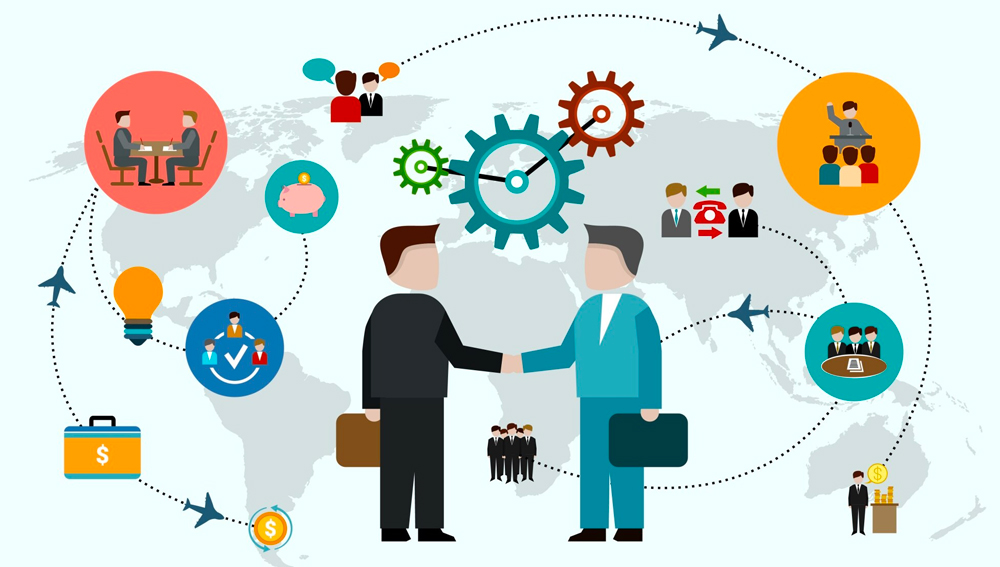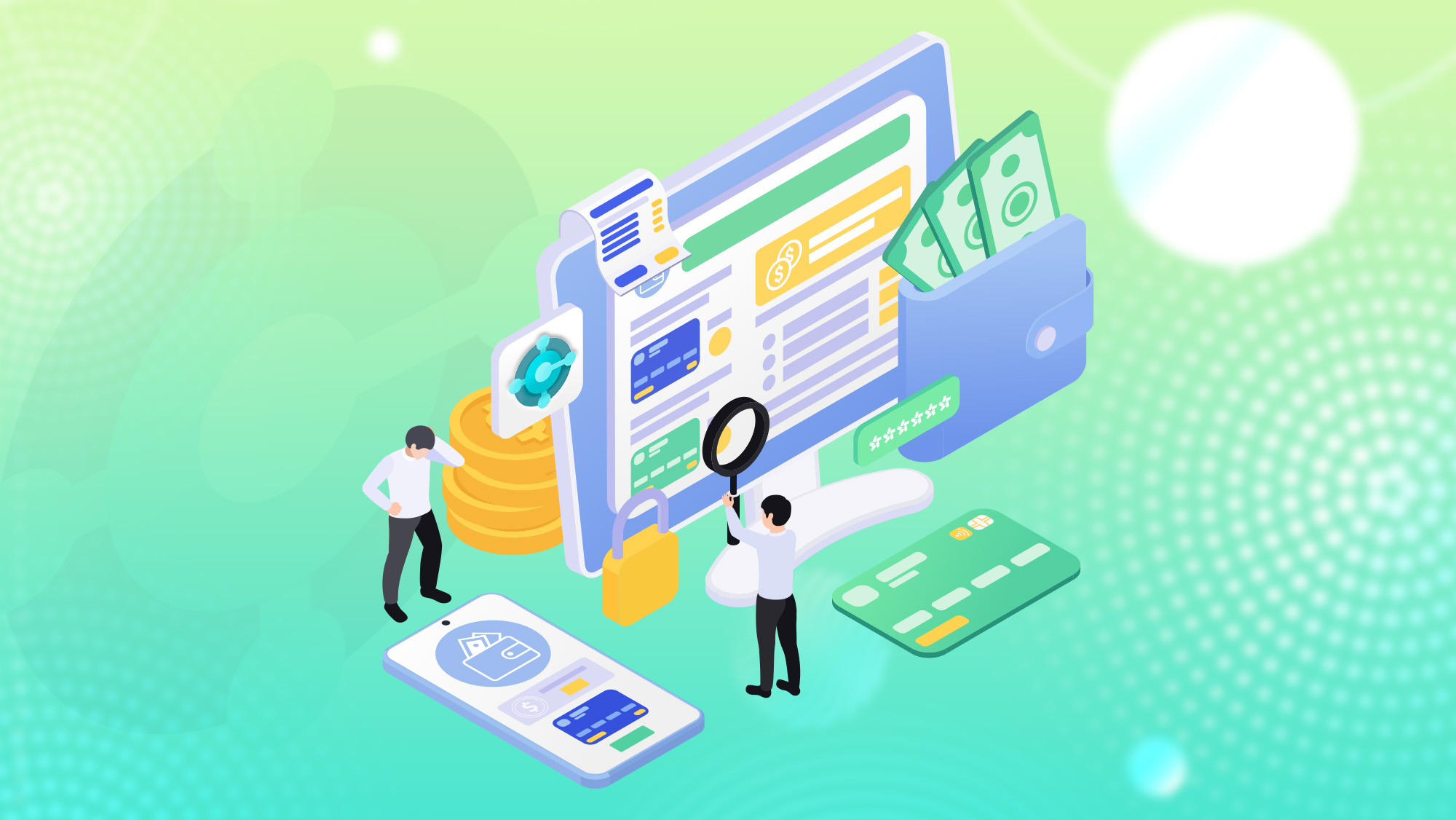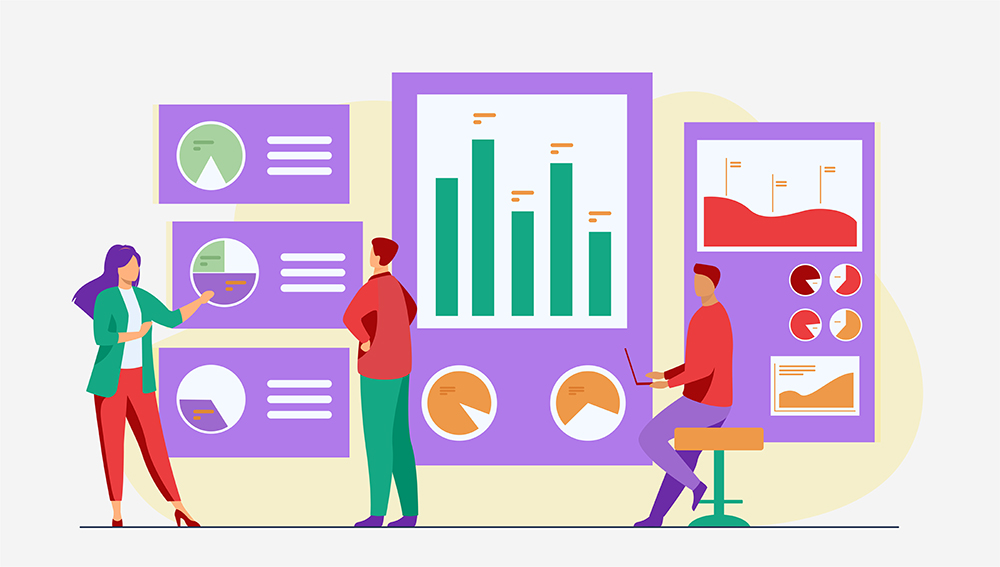According to an AMR report, the worldwide market for ERP software was valued at $35.81 billion in 2018 and is projected to reach $78.40 billion by 2026.

So, do you know about the ERP system?
The term ERP is commonly heard among business professionals, but not everyone is familiar with ERP’s (Enterprise Resource Planning) potential benefits for their organisations.
Businesses of all industries & sizes should embrace the ERP system to accelerate massive growth. Dynamics Square is successfully helping businesses in embracing ERP technology to drive massive proliferation.
But the question is why? Put your mind at ease, as this guide sets its sights on clarifying the ERP concept, history, evolution, advantages, challenges, types, and various other additional information.
Let us walk through this guide to know how ERP is recognised as the backbone of a successful business.
What is ERP?

Enterprise Resource Planning (ERP) is a unified platform that facilitates the seamless integration of numerous business processes and data into a single platform to gain better visibility and manage the business efficiently.
By establishing the ERP system, business owners can track all processes such as human resources, finance, production, supply chain, logistics etc. It provides you with real-time analytics over entire business aspects facilitating informed decisions.
- Improved Operational Efficiency
- Better Collaboration
- Saving Enormous Time & Energy
- Eliminates Manual & Duplicity of Efforts
ERP Example: Business Scenario
Suppose a manufacturing company implements an ERP system to manage its production process, from raw material procurement to finished product delivery. Now, how will ERP help them to automate the manufacturing process, and increase production efficiency?
Why Do You Need An ERP: Major Benefits
- ERP system can easily track their inventory levels and production progress
- They can manage shipping and delivery schedules seamlessly
- ERP integration enables manufacturing teams to provide real-time information to decision-makers
- They will have access to end-to-end business functions and data, enabling access to their other departments as well
In simple terms, business owners and major stakeholders can easily access complete transparency across all areas of their enterprise.
ERP Deployment Models: Types of ERP

ERP systems implementation can be classified into three types using different deployment models. Let us discuss three ERP types:
On-Premises ERP Software
The On-Premises ERP software is set up onsite and maintained within the infrastructure of the enterprise. The ERP is installed or implemented on the computers and servers of the company. After successful implementation, they get complete control over the ERP system.
Cloud-Based ERP Software
Cloud-based ERP software is all about implementing a web-based solution that facilitates enterprises to access and store data on any internet-connected device. It is also known as SaaS (Software as a Service). It is a paid subscription including 24X7 support, regular updates, training, and flexible customisations. With this kind of software solution, a business can manage its operations more effectively, while mitigating the IT infrastructure management cost.
Hybrid ERP Software
Cloud-based & on-premises ERP systems together implement the Hybrid ERP software that facilitates the full-fledged flexibility to migrate between the delivery models. Your company can oversee all aspects of the business seamlessly in one centralised application.
How do ERP Systems Operate?
By collecting data from various departments, an ERP system consolidates the information in a centralised location, allowing authorised employees to access it at the right time. It also eliminates the issue of data silos commonly encountered in businesses, ensuring that the relevant data is immediately available to the parties concerned.
The ERP system is completely automated and handles all the data entries for your enterprise at the back end. Additionally, it shares updated information with other relevant departments to keep them in the loop.
By doing so, organisations can efficiently use the data to make timely and informed decisions, thus improving their decision-making process.
How ERP Can Make a Difference: Stay Ahead Using an ERP
Amidst the highly competitive business world, it is quite challenging to achieve sustainable growth in your business without the right NexGen tech-driven tools and technologies.
However, the integration of ERP system into your business workflows is the perfect solution to stand on the trajectory of massive growth and greater scalability. It enables you to make data-driven decisions via real-time visibility into complex business operations.
Perks & Benefits of Using an ERP

Swift & Real-Time Analytics Access
The primary benefit of implementing ERP systems into your business workflows is you get access to real-time visibility into all critical business data in your enterprise. This amplifies the decision-making process and efficiency across multiple departments.
Maximised & Optimal Productivity
A business integrated with an ERP system says no to manual or repetitive workflows and gets real-time insights into crucial performance indicators. The entire business process becomes streamlined and smooth. This results in maximised and optimal productivity, giving your company a competitive edge in the marketplace.
Foster Enhanced Collaboration & Communication
Investments made in the right ERP facilitate better collaboration, and communication across different departments, making the business process more effective and efficient. Subsequently, businesses adapt swiftly to evolving changing market demands and stay ahead of the curve in competition.
Higher Scalability
As your business grows, it should become more flexible to adapt to the changing requirements and this is what ERP does. It helps your business to stay agile and scalable to evolve marketing conditions. Simultaneously, it also mitigates the cost and risk associated with the ERP implementation process.
Remarkable Customer Service
Outstanding client gratification and superior customer service are the two primary areas that ERP software caters to. It gives you access to a 360-degree view of your customers, including all the necessary information like purchase history, preferences, and feedback. Utilising these features, you can deliver top-notch customer services, which gives you a competitive edge over your competitors.
Want to get a competitive edge using ERPs? Connect with us today!!
Which Business Operations Can be Streamlined Using ERP?

The use of an ERP can streamline various business operations, including but not limited to:
Finance
- ERP can automate financial processes such as accounting, billing, and invoicing, enabling businesses to efficiently manage their finances and ensure compliance with regulations
- Its dashboard gives you access to AI-driven insights into your finances, helping with accurate decisions
Human Resource
- ERP system integration brings automation to the entire human resource department such as recruitment, payroll, and various other administration workflows
- It manages your workforce seamlessly and effectively, along with a better employee engagement rate
Supply Chain
- ERP eliminates the need to enter the information manually repeatedly in the database to track the inventory level. Let ERP automate your supply chain functions in your business
- It enables your business to manage all the resources effectively while reducing costs
Commerce
- Implementation of ERP resolves numerous hurdles of the retail business by providing an all-in-one solution for omnichannel commerce that integrates back-office, in-store, and digital experiences
- ERP’s AI recommendations feature gives personalised suggestions to the customers to make their shopping experience hassle-free. It also protects retailers from curb fraud and boosts efficiency
Who Can Use An ERP?

- Consulting
- Education
- Healthcare and life sciences
- IT services
- Nonprofits
- Professional services
- Restaurants and hospitality
- Retail
- Advertising and digital media
- Apparel, footwear, and accessories energy
- Financial services
- Food and beverage
- Health and beauty
- Manufacturing
- Media and publishing
- Software and technology
- Transportation and logistics
- Wholesale distribution
Who Can Use An ERP?
Undoubtedly, ERP aids enterprises rationalise their operations; thereby improving productivity, nevertheless, its implementation is quite complex. Let us have some glimpses on the below-mentioned five most common challenges that enterprises encounter while implementing ERP:
Data Migration
The migration of data from existing ERP systems to new ones is an immensely challenging process. It takes enormous time, and dedication to maintain the accuracy level to shuns data loss. It is the biggest challenge for businesses while implementing an ERP.
System Integration
While implementing the ERP system, a business must integrate it with other software, like Supply Chain Management (SCM), Human Resource Management (HRM), and Customer Relationship Management (CRM). However, this integration process can be complicated, requiring a huge amount of time, as well as resources.
High Maintenance Expense
A business investing in the ERP system should consider its regular maintenance to leverage its long-lasting benefits in the long run. But it is associated with high maintenance costs. Therefore, ensure that you choose the right ERP implementation partner like Dynamics Square who can provide adequate support for the long-term and make your implementation worthwhile.
Project Management Issues
There are various phases of implementing ERP systems such as planning, designing strategies, data migration, testing, deployment, support, and then implementing post-launch updates. Every phase comes with the critical responsibility of workflows that demands considerable time, and meticulous project management planning.
User Adaptability Issues
Most employees resist ERP implementation as it drastically changes the way they work, which may sometimes degrade productivity levels, and spike the cost factor.
Start Your Digital Transformational Journey with Dynamics 365
Tailoring ERP Systems to Meet Business Size Needs
Enterprise Resource Planning (ERP) is the significant NexGen tech-driven technology solution to manage business operations, enormous data, and resources more effectively. Their comprehensive suite of applications helps in a seamless integration of numerous business functions including accounting, finance, HR, supply chain management, and CRM.
However, ERP systems are not a one-size-fits-all solution for all business sizes. Henceforth, it’s crucial to tailor them to accomplish the numerous needs of a business of varied sizes.
Let us walk through the ERP deployment models for each business profile
Project Management Issues
Small-size businesses should consider the strategies below to leverage the maximum potential of the ERP system. They should prioritise mapping out all required functionalities prior to initiating the search for ERP systems to avoid excessive costs. ERP is the best solution, and here are its benefits:
- Low upfront cost
- Less requirement of technical resources
- Greater scalability
- Faster turnaround time
ERP Module in Midsize-Business
They prefer ERP systems with specialised modules, enabling them to scale up to meet the requirements of evolving businesses. They should also prefer cloud-based ERP software in response to limited in-house technical expertise.
ERP Module in Large-Size Business
Large-size business demands an ERP platform that can manage the components and huge data of multiple business units simultaneously. Hybrid ERP software works better for them as it combines both ERPs: On-premises & cloud. It helps them to experience more scalability as their business expands.
ERP Implementation Checklist

Businesses implementing the ERPs without meticulous planning, and strategies end up wasting a lot of time, and money. How long the ERP implementation project takes relies on numerous factors like the type of deployment model, size of business, resources dedicated etc.
Let us walk through the ERP implementation checklist to comprehend more precisely
Research & Planning
In this stage, a business defines the objectives, mission, and vision of the ERP system, and creates a detailed project plan.
Meticulous Analysis
During this stage, a business analyses its present business process. They spot the business functions that should be ameliorated using ERP implementation.
Design
In this stage, an enterprise works on designing the ERP system by configuring the software to meet its specific needs and requirements.
Development
During this stage, the organisation develops customisations, interfaces, and reports to integrate the ERP system with its existing systems.
Testing
In this stage, the organisation performs extensive testing to ensure that the ERP system is functioning and meeting all its requirements seamlessly.
Deployment
In this stage, the organisation deploys the ERP system that includes data migration from existing systems, training users, and making the system ready-to-use.
Maintenance
In this stage, the organisation maintains the ERP system by performing regular updates, addressing issues and bugs, and continuously improving the system to meet changing business needs.
Stay Ahead and Transform Your Business Using An ERP
Estimating the Cost of Implementing ERP
The cost of ERP implementation depends on various factors such as business size, complexity of business, customisation levels, number of users, training, software licensing etc. This makes it challenging to give a ballpark figure for the ERP implementation.
Need exact estimates? Reach out to the Dynamics 365 ERP consultants at Dynamics Square!
Tracing the Roots of ERP: A Historical Overview

Enterprise Resource Planning (ERP) is a centralised business process management solution that integrates numerous business functionalities & data into a single platform. ERP has a long history, tracing its roots back to the 1960s.
Here is a timeline overview of how ERP evolved into what it is today:
1960s: Material Requirements Planning (MRP)
The first iteration of ERP was Material Requirements Planning (MRP). It was developed in the 1960s to streamline the business process and provide data analytics to assist manufacturing companies. MRP was a great helping hand for manufacturers in scheduling the requirements and planning department. Subsequently, inventory management became easy for the manufacturing industries.
1980s: Manufacturing Resource Planning (MRP II)
In the 1980s, MRP evolved into Manufacturing Resource Planning (MRP II), which drastically transformed the manufacturing business. This new version helped enterprises in managing their business operations or resources more effectively while mitigating the cost.
1990s: Enterprise Resource Planning (ERP)
In the 1990s, ERP emerged as a comprehensive solution that integrated all aspects of business operations including finance, supply chain, human resource, etc. This means that ERP enabled the business to manage all business functions in one centralized platform. Consequently, data sharing became a seamless process that has also enhanced overall efficiency.
Today (2023): Cloud-based ERP Solutions
Today, ERP has evolved into cloud-based solutions providing more flexibility and scalability to businesses. Cloud-based ERP allows businesses to access their data from anywhere using any device. Additionally, it provides advanced analytics and reporting, which helps enterprises make more informed decisions.
Future of ERP
ERP has a promising future in response to NexGen, tech-driven and innovative technological advancements to ameliorate the ERP’s capabilities. It has in-built upgraded AI & machine learning algorithms to provide more precise forecasting and predictive analysis. Cloud-based designed solutions are making ERP more accessible and affordable for small and medium-size organisations, and hybrid ERPs are for large-size businesses.
ERPs have tremendous benefits that can help you to stay ahead of the curve across the market. If you have not incorporated the ERP system, it is the right time to implement it. For more details, contact the experts at Dynamics Square.
Extensive Range of Microsoft Dynamics 365 ERP Platforms
- Dynamics 365 Business Central
- Dynamics 365 Commerce
- Dynamics 365 Supply Chain Management
- Dynamics 365 Finance
- Dynamics 365 Project Operations
Who is the Trusted Partner for End-to-End ERP Solutions?
Dynamics Square is Australia’s leading Microsoft Dynamics 365 Partner helping you build highly customized ERP solutions. We set our sights on assisting businesses to drive tremendous growth by managing their operations more effectively.
Get started on your ERP journey with Dynamics Square Today!!
Frequently Asked Questions
1. What is ERP?
2. What functions does an ERP system typically integrate?
3. What can ERP do for our business?
4. Why should a business invest in an ERP system?
5. What are some remarkable ERP solutions available?
Latest Posts & Blogs
Contemporary businesses are changing at a rate of knots using innovative business solutions to stay afloat. Know more about industry trends, challenges and opportunities in detail after going through an array of exciting blogs.
Read the blogs penned by industry-experts who know the nerve of the business to start your digital transformation journey.
Uncover the power of Dynamics 365 Customer Insights in crafting tailored customer journeys. Revoluti...
Find the perfect Dynamics 365 support partner customised for your business. Read more....
Unlock efficiency with accounts payable automation in Business Central. Explore key benefits for str...
Unlock efficient asset tracking with Dynamics 365 Business Central Asset Management. Optimise operat...
Live Demo
Request a
Personalised Demo
test
Let us show you how Microsoft Dynamics 365 can help you automate processes and boost productivity throughout your digital transformation.
Our team of consultants will contact you to discuss your requirements in order to better structure the demonstration.
Why Dynamics Square?
Dynamics Square is the leading Microsoft Dynamics 365 partner in Australia known for its futuristic solutions and unmatched customer service. Consult our experts, who know the nerve of the industry to transform your business today.
150+
Man Years of Expertise
Our in-depth knowledge of the products and years of expertise has enabled the Dynamics Square team to deliver services with efficiency in record less time.
100+
Subject Matter Experts
The team at Dynamics Square comes with their hands-on experience which helps them cater to issues those businesses do not know exist.
500+
Project Deliveries
Our team has efficiently and successfully completed 500+ successful projects and continues to add new feathers to our cap every day.
24*7
Customer Support
We provide round the clock customer support for all services that we offer including, implementation, upgradation, audit, consultation and so on.
13
Products & Services
We offer a complete suite of products and services for businesses to boost growth and introduce digitalisation, enhancing organisational agility.
99%
Customer Satisfaction
The numerous success stories and references of Dynamics Square speaks high volumes of the level of customer satisfaction the team provides.




